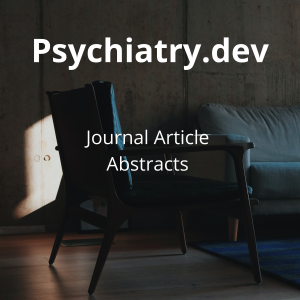1x
1.3x
1.6x
2x
Download: Paranoid Thinking as a Function of Minority Group Status and Intersectionality: An International Examination of the Role of Negative Beliefs –
J L Kingston et al.
Schizophrenia Bulletin.
2023.
Using cross-sectional, survey design, with a large (n = 2510) international sample, moderation analyses (PROCESS) examined whether self and other beliefs, and perceived social rank, operate similarly or differently in minority vs majority group participants. Specifically, we tested whether beliefs moderated the influence of minority group, and intersecting aspects of difference, on paranoia.
Paranoia was consistently higher in participants from minority vs majority groups and level of paranoid thinking was significantly higher at each level of the intersectionality index. Negative self/other beliefs were associated with elevated paranoia in all participants. However, in support of the notion of healthy cultural mistrust, low social rank, and low positive self/other beliefs were significantly associated with paranoia in majority group participants but unrelated to paranoia in respective minority group members.
Although mixed, our findings signal the need to consider healthy cultural mistrust when examining paranoia in minority groups and bring into question whether “paranoia” accurately describes the experiences of marginalized individuals, at least at low levels of severity. Further research on paranoia in minority groups is crucial to developing culturally appropriate ways of understanding people’s experiences in the context of victimization, discrimination, and difference.
minority group; negative beliefs; paranoia; positive beliefs; social rank.
Source link
U of T EZproxy link







